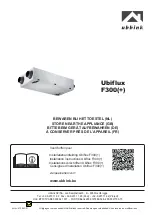
28
Eng
lish
Troubleshooting
• If you are having a problem with your System, check this list for a possible solution before calling for service.
• If you cannot solve the problem from the hints given here, or the System has been physically damaged, call a qualified person, such as
your dealer, for service.
Symptom
Possible Cause
Action
No sound is heard.
• Connections are incorrect, or loose.
• Headphones are connected.
• Check all connections and make cor-
rections. (See pages 4 to 6.)
• Disconnect the headphones.
Poor radio reception
• The antenna is disconnected.
• The AM Loop Antenna is too close
to the System.
• The FM Wire Antenna is not prop-
erly extended and positioned.
• Reconnect the antenna securely.
• Change the position and direction of
the AM Loop Antenna.
• Extend FM Wire Antenna to the best
reception position.
The disc tray does not open.
• The AC power cord is not plugged in.
• Tray is locked.
• Plug the AC power cord.
• Unlock the tray. (See page 15.)
The CD skips.
The CD is dirty or scratched.
Clean or replace the CD. (See page 27.)
The CD does not play.
The CD is upside down.
Put the CD in with the label side up.
The cassette holder cannot be opened.
During tape playing, the power cord
was unplugged.
Plug in the power cord, and turn on the
System.
Unable to record.
Cassette record protect tabs are re-
moved.
Cover holes on back edge of cassette
with tape.
Unable to operate the Remote Control.
• The path between the Remote Con-
trol and the sensor on the Unit is
blocked.
• The batteries have lost their charge.
• Remove the obstruction.
• Replace the batteries.
Operations are disabled.
The built-in microprocessor has mal-
functioned due to external electrical in-
terference.
Unplug the System then plug it back in.
Specifications
Amplifier
Output Power
CA-MXK30 60 W per channel, min. RMS, driven into
6
Ω
at 1kHz, with no more than 10% to-
tal harmonic distortion (IEC 268-3)
CA-MXK10 30 W per channel, min. RMS, driven into
6
Ω
at 1kHz, with no more than 10% to-
tal harmonic distortion (IEC 268-3)
Input Sensitivity/Impedance (1 kHz)
AUX IN 300 mV/50 k
Ω
Speaker terminals 6 - 16
Ω
Phones 32
Ω
- 1 k
Ω
,
15 mW/ch output into 32
Ω
Cassette Deck Section
Frequency Response
Type I (NORMAL) 63 - 12 500 Hz
Wow And Flutter 0.15% (WRMS)
CD Player
CD Capacity 3 CDs
Dynamic Range 85 dB
Signal-To-Noise Ratio 90 dB
Wow And Flutter Unmeasurable
Tuner
FM Tuner
Tuning Range 87.5 - 108.0 MHz (at AM 10 kHz channel space)
87.50 - 108.00 MHz (at AM 9 kHz channel space)
AM Tuner
Tuning Range 530 - 1 710 kHz (at 10 kHz channel space)
531 - 1 710 kHz (at 9 kHz channel space)
Unit
Dimensions
CA-MXK30 270 mm
✕
305 mm
✕
430 mm (W/H/D)
CA-MXK10 270 mm
✕
305 mm
✕
386 mm (W/H/D)
Mass
CA-MXK30 Approx. 7.5 kg
CA-MXK10 Approx. 6.6 kg
Speaker Specifications (each unit)
SP-MXK30
Type 3-way bass-reflex type
Speaker Unit Woofer: 13.5 cm cone
✕
1
Mid:
5 cm cone
✕
1
Tweeter: 2 cm dome
✕
1
SP-MXK10
Type 3-way bass-reflex type
Speaker Unit Woofer: 13.5 cm cone
✕
1
Mid:
5 cm cone
✕
1
Tweeter: 2 cm dome
✕
1
Power Handling Capacity
SP-MXK30 60 W
SP-MXK10 30 W
Impedance 6
Ω
Frequency Range 45 - 22,000 Hz
Sound pressure level 88 dB/wm
Dimensions 225 mm
✕
305 mm
✕
245 mm (W/H/D)
SP-MXK30 Mass Approx. 3 kg
SP-MXK10 Mass Approx. 2.7 kg
Accessories
AM Loop Antenna (1)
Remote Control (1)
Batteries R6P (SUM-3)/AA (15F) (2)
FM Wire Antenna (1)
AC Plug Adaptor (1)
Power Specifications
Power Requirements AC 110/127/220/230 - 240 V , adjust-
able with the voltage selector, 50/60 Hz
Power Consumption
CA-MXK30 105 W (power on mode)
10 W (in Standby mode)
CA-MXK10 65 W (power on mode)
8 W (in Standby mode)
Design and specifications are subject to change without notice.
Body.fm Page 28 Thursday, March 21, 2002 3:49 PM
















































